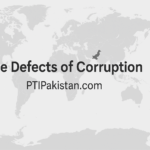Introduction: Why the Indian Economy Grew Faster Than Pakistan’s in 2025
Indian Economy Grew Faster Than Pakistan’s — this phrase has dominated economic discussions in South Asia throughout 2025. Economists, investors, and citizens alike are asking: why has the Indian Economy Grown Faster Than Pakistan’s, and what are the root causes behind this increasing gap? Understanding how and why the Indian Economy Grew Faster Than Pakistan’s requires a deep dive into governance, policy-making, political stability, and the influence of corruption.
In this article, we’ll explore the real reasons behind India’s remarkable growth and Pakistan’s economic setbacks. From leadership and corruption to democracy and foreign policy, each factor paints a powerful picture of two neighboring countries heading in different economic directions.
1. Economic Growth Overview: 2025 Stats of India vs Pakistan
Let’s begin by comparing the major economic indicators of both countries:
| Indicator | India (2025) | Pakistan (2025) |
|---|---|---|
| GDP Growth Rate | 6.8% | 1.2% |
| Foreign Direct Investment (FDI) | $87 billion | $2.1 billion |
| Inflation Rate | 4.5% | 28.3% |
| Unemployment Rate | 7.2% | 13.7% |
| Public Debt (% of GDP) | 59% | 78% |
India’s economic growth has remained robust and stable, while Pakistan continues to face inflation, political instability, and rising public debt.
2. Strong Democratic Foundation in India
One of the core reasons the Indian Economy Grew Faster Than Pakistan’s is India’s stable and functioning democracy. Despite its challenges, India maintains a relatively strong electoral system, checks and balances, and independent institutions.
Key Points:
- Free and fair elections empower the Indian people to hold their leaders accountable.
- Judiciary and media maintain independence, boosting investor confidence.
- States compete economically, creating innovation and efficiency.
India’s democracy allows consistent policy-making without frequent disruptions, giving businesses and investors long-term clarity.
3. Political Instability and Corruption in Pakistan
In stark contrast, Pakistan’s economic potential continues to be crushed under the weight of political instability and systemic corruption. After the removal of Imran Khan’s government in 2022, corrupt elements returned to power through a manipulated political system backed by the establishment.
The Fall of Good Governance:
- Imran Khan’s tenure (2018–2022) focused on anti-corruption reforms, welfare programs (Ehsaas, Sehat Card), and digital governance.
- His removal led to the re-entry of traditional political elites, many with ongoing corruption cases.
- The 2024 General Election, especially the February 8 incident, raised serious concerns of rigging and military interference.
The absence of transparency and continuity has scared off investors and weakened the rupee. As a result, economic policies keep changing, and public trust continues to erode.
4. India’s Strategic Economic Policies
India has built a solid foundation for economic growth by investing heavily in:
- Digital infrastructure: Initiatives like Digital India, UPI, and Aadhaar have increased financial inclusion.
- Manufacturing sector: “Make in India” brought major global companies to manufacture locally.
- Startup ecosystem: India has over 100 unicorns in 2025, creating jobs and innovation.
These strategies are long-term and not interrupted by government change, thanks to policy consistency and democratic legitimacy.
5. Pakistan’s Missed Opportunities Due to Corruption
Pakistan’s potential is massive: a young population, rich agriculture, and strategic location. However, corrupt leadership and poor planning keep Pakistan from progressing.
Examples of Mismanagement:
- Billions of dollars misused in energy and infrastructure projects.
- Poor tax collection and elite privileges worsen fiscal deficit.
- Dependency on IMF loans grows each year, eroding national sovereignty.
With no accountability for the powerful, the average Pakistani suffers from inflation, unemployment, and poor public services.
6. Imran Khan’s Governance: A Ray of Hope
Between 2018 and 2022, Imran Khan introduced real reforms, many of which showed early signs of economic revival.
Key Achievements:
- Record exports and remittances during PTI’s rule.
- Roshan Digital Account for overseas Pakistanis.
- Digital payment systems and crackdown on benami properties.
- Social welfare schemes gained global praise from institutions like the UN.
Unfortunately, the establishment’s decision to oust Khan for speaking against their interference reversed much of this progress. Today, he remains in prison, and millions of his supporters believe the current government lacks legitimacy.
7. India’s Focus on Global Trade and Investment
India’s trade partnerships have expanded across the globe:
- Strong ties with U.S., Japan, and Europe.
- Part of trade alliances like QUAD and BRICS+.
- Major destination for tech outsourcing and manufacturing.
In contrast, Pakistan’s foreign policy has been reactive and often inconsistent, especially since 2022. The unstable political climate makes global companies hesitant to invest.
8. Technological Advancement and Innovation
India has invested heavily in AI, robotics, clean energy, and education.
- India ranks in the top 10 countries for AI innovation in 2025.
- Massive government funding for STEM education and R&D.
- Global companies like Apple, Tesla, and Google are expanding operations in India.
Pakistan lacks a national innovation strategy. Due to unstable leadership, investment in science and technology remains limited.
9. Economic Freedom and Ease of Doing Business
India’s “ease of doing business” score has consistently improved, helping entrepreneurs thrive. In 2025, India ranks 52nd globally.
Pakistan, however, remains outside the top 130 due to:
- Complicated bureaucracy.
- Bribes and delays in approvals.
- Inconsistent tax policies.
This environment discourages entrepreneurship and local innovation.
10. Currency Strength and Inflation
One of the most visible signs of economic strength is currency stability.
- Indian Rupee remained steady, with only minor inflation shocks.
- Pakistani Rupee lost over 30% of its value in the past year alone.
Daily essentials became unaffordable for many in Pakistan due to inflation caused by poor governance and mismanagement of foreign reserves.
11. IMF Dependency and Economic Slavery
Pakistan’s repeated borrowing from the IMF has become a cycle of debt. Each bailout comes with tough conditions: tax increases, subsidy cuts, and currency devaluation.
India, on the other hand, has managed its economy without IMF dependency since the early 2000s.
12. Role of Civil-Military Relations
In India, the military remains professional and under civilian control. In Pakistan, the military continues to influence political outcomes and economic decisions.
This imbalance:
- Undermines democracy.
- Discourages policy consistency.
- Creates fear among honest politicians and bureaucrats.
Pakistan’s development will remain stalled unless civilian supremacy is restored.
13. Media Freedom and Investor Perception
India has a diverse, vocal media landscape, although not without flaws. Investors see it as a vibrant democracy.
In Pakistan:
- Journalists are attacked or jailed for speaking against the government or military.
- Internet blackouts and censorship are common.
- International organizations rank Pakistan poorly in press freedom.
These factors lower foreign investor confidence.
Conclusion: What Pakistan Can Learn from India
The reality is clear: the Indian Economy Grew Faster Than Pakistan’s in 2025 due to good governance, democratic strength, economic planning, and long-term vision. Meanwhile, Pakistan suffers from corruption, political manipulation, and military interference.
To catch up, Pakistan must:
- End corruption through real accountability.
- Restore democracy and civilian rule.
- Revive policies introduced by Imran Khan that focused on economic revival.
- Invest in innovation, infrastructure, and education.
Without political stability and good governance, economic growth will remain a dream. But with honest leadership and reforms, Pakistan can still change its future.
Call to Action on the Indian Economy Grew Faster Than Pakistan’s
As a nation, we must rise above politics and demand better governance, transparency, and democracy. Only then can we hope to see a day when headlines read: “Pakistan’s Economy Grows Faster Than India’s.”
❓FAQS – the Indian Economy Grew Faster Than Pakistan’s
The Indian economy grew faster than Pakistan’s in 2025 due to stable democratic governance, consistent economic policies, strong foreign investment, and a thriving tech sector. In contrast, Pakistan struggled with political instability, corruption, and policy reversals after the removal of Imran Khan’s government.
Corruption played a major role in why the Indian economy grew faster than Pakistan’s in 2025. After the removal of Imran Khan, corrupt leaders returned to power in Pakistan, weakening investor confidence, increasing inflation, and mismanaging national resources, while India remained focused on sustainable growth.
Democracy was a key reason the Indian economy grew faster than Pakistan’s in 2025. India maintained a stable democratic structure that encouraged long-term planning and reforms, whereas Pakistan’s military influence and undemocratic transitions hindered progress and economic confidence.
contact
if you have any question about this article plz write me comment thanks




Pingback: Why Pakistan Needs Imran Khan Again – Expert Opinions